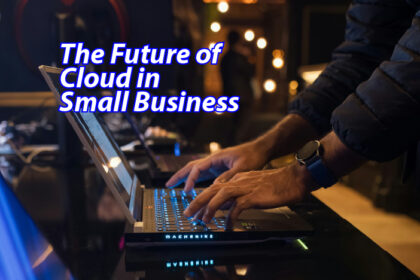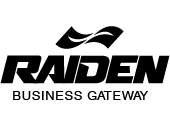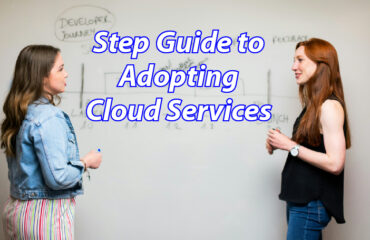The Future of Cloud in Small Business – Chapter 12

12.1 Introduction
Cloud computing has already transformed how small businesses operate, giving them access to tools and infrastructure once reserved for large corporations. But the story doesn’t end here—the cloud continues to evolve, and its future promises even greater opportunities. From artificial intelligence (AI) to the Internet of Things (IoT) and edge computing, emerging cloud technologies will further empower small businesses to become smarter, faster, and more competitive.
For entrepreneurs, understanding these trends isn’t just interesting—it’s essential. Small businesses that adopt new technologies early often gain a competitive edge, while those that lag risk being left behind.
12.2 The Rise of Artificial Intelligence (AI) in the Cloud
AI is no longer science fiction; it’s already integrated into many cloud services that small businesses use daily. Whether it’s predictive analytics in CRMs, chatbots in customer service, or automated ad targeting, AI is increasingly accessible through the cloud.
How AI in the Cloud Benefits Small Businesses:
-
Predictive Insights: AI analyzes customer data to forecast buying behavior.
-
Smart Automation: Chatbots handle basic customer queries 24/7.
-
Personalized Marketing: Cloud tools like HubSpot use AI to send customized messages at the right time.
-
Fraud Detection: Payment processors use AI to detect suspicious transactions.
Example:
A small e-commerce brand uses AI-driven recommendations on Shopify to suggest related products, increasing average order value by 15%.
In the future, AI in the cloud will only grow smarter and more affordable, allowing even the smallest business to act with the intelligence of a Fortune 500 company.
12.3 Internet of Things (IoT) and Cloud Integration
The Internet of Things (IoT) refers to everyday devices—such as sensors, cameras, and appliances—connected to the internet. When combined with cloud computing, IoT creates powerful opportunities for small businesses.
Examples of IoT + Cloud for SMEs:
-
Retail: Smart inventory sensors update stock levels in real time, synced with cloud databases.
-
Hospitality: Hotels use IoT devices to control room lighting and air conditioning, improving guest experiences while cutting energy costs.
-
Healthcare: Small clinics use connected devices to monitor patient vitals, storing results securely in the cloud.
Case Study:
A small logistics company integrates IoT trackers with cloud dashboards to monitor delivery vehicles. This allows real-time route optimization, reducing fuel costs by 10%.
As IoT adoption grows, small businesses will have access to real-time data streams that were once out of reach.
12.4 Edge Computing and Faster Processing
While the cloud centralizes data in large data centers, edge computing processes data closer to where it’s generated. For small businesses, this means faster performance and reduced reliance on constant high-speed internet.
Example:
A local manufacturing shop uses IoT sensors to monitor equipment. Instead of sending all data to the cloud, edge computing processes urgent alerts on-site, while only historical data is sent to the cloud for storage.
In the future, edge computing will make cloud tools even more reliable for small businesses, especially in areas with weaker internet connectivity.
12.5 Industry-Specific Cloud Innovations
The next decade will also see more tailored cloud solutions for specific industries, helping small businesses compete with larger firms.
-
Retail: AI-driven demand forecasting, virtual try-on tools, and personalized promotions.
-
Healthcare: Telemedicine platforms integrated with cloud-based patient records.
-
Finance: Cloud-based blockchain solutions for faster, more transparent transactions.
-
Education: Virtual classrooms powered by cloud video platforms and AI tutors.
Example:
A small online tutoring business uses cloud video conferencing integrated with AI-powered language translation, allowing it to reach international students without hiring multilingual staff.
12.6 Sustainability and Green Cloud
As businesses and consumers become more environmentally conscious, cloud providers are moving toward sustainable infrastructure powered by renewable energy. For small businesses, this means not only reducing their carbon footprint but also appealing to eco-conscious customers.
Example:
A small eco-friendly fashion brand promotes the fact that its e-commerce platform is powered by Google Cloud, which runs on renewable energy. This alignment with customer values strengthens its brand image.
12.7 Challenges for the Future
While the future is promising, small businesses must be aware of potential challenges:
-
Data Privacy Regulations: Laws like GDPR will continue to evolve, requiring careful compliance.
-
Cybersecurity Threats: As technology advances, so do cybercriminals.
-
Skill Gaps: Small teams may need ongoing training to keep up with new tools.
-
Cost Control: With more advanced services, businesses must avoid over-subscribing.
The businesses that thrive will be those that balance innovation with strategy—adopting new tools while keeping governance and cost management in check.
12.8 Conclusion: The Next Decade of Cloud for Small Business
The future of cloud in small business is not just about storage or cost savings—it’s about intelligence, integration, and innovation. AI will give small firms the ability to predict customer needs. IoT will provide real-time operational insights. Edge computing will make systems faster and more resilient. Industry-specific solutions will ensure that businesses of all types can benefit, from cafés to clinics.
For small businesses, the cloud is more than a technology trend—it is the foundation of the future. Those who embrace it now will not only keep pace with competitors but may even outpace them, proving that size no longer limits innovation in the digital era.
The next chapter will serve as a step-by-step guide to adopting cloud services, helping small business owners create a roadmap for successful cloud migration.


